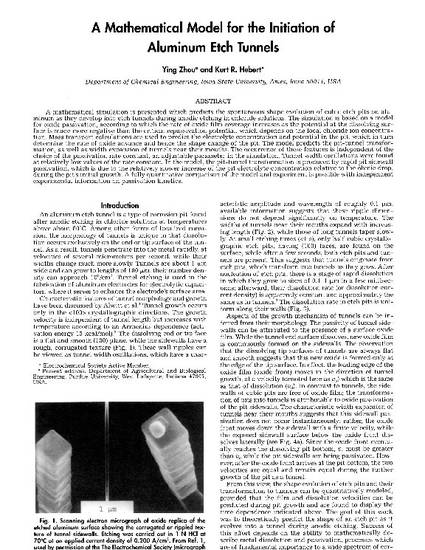
A mathematical simulation is presented which predicts the spontaneous shape evolution of cubic etch pits on aluminum as they develop into etch tunnels during anodic etching in chloride solutions. The simulation is based on a model for oxide passivation, according to which the rate of oxide film coverage increases as the potential at the dissolving surface is made more negative than the critical repassivation potential, which depends on the local chloride ion concentration. Mass transport calculations are used to predict the electrolyte concentration and potential in the pit, which in turn determine the rate of oxide advance and hence the shape change of the pit. The model predicts the pit‐tunnel transformation, as well as width expansion of tunnels near their mouths. The occurrence of these features is independent of the choice of the passivation rate constant, an adjustable parameter in the simulation. Tunnel width oscillations were found at relatively low values of the rate constant. In the model, the pit‐tunnel transformation is produced by rapid pit sidewall passivation, which is due to the relatively slower increase of the pit electrolyte concentration relative to the ohmic drop, during the pit's initial growth. A fully quantitative comparison of the model and experiment is possible with independent experimental information on passivation kinetics.
Available at: http://works.bepress.com/kurtr_hebert/14/

This article is from Journal of the Electrochemical Society 145 (1998): 3100–3109, doi:10.1149/1.1838771. Posted with permission.